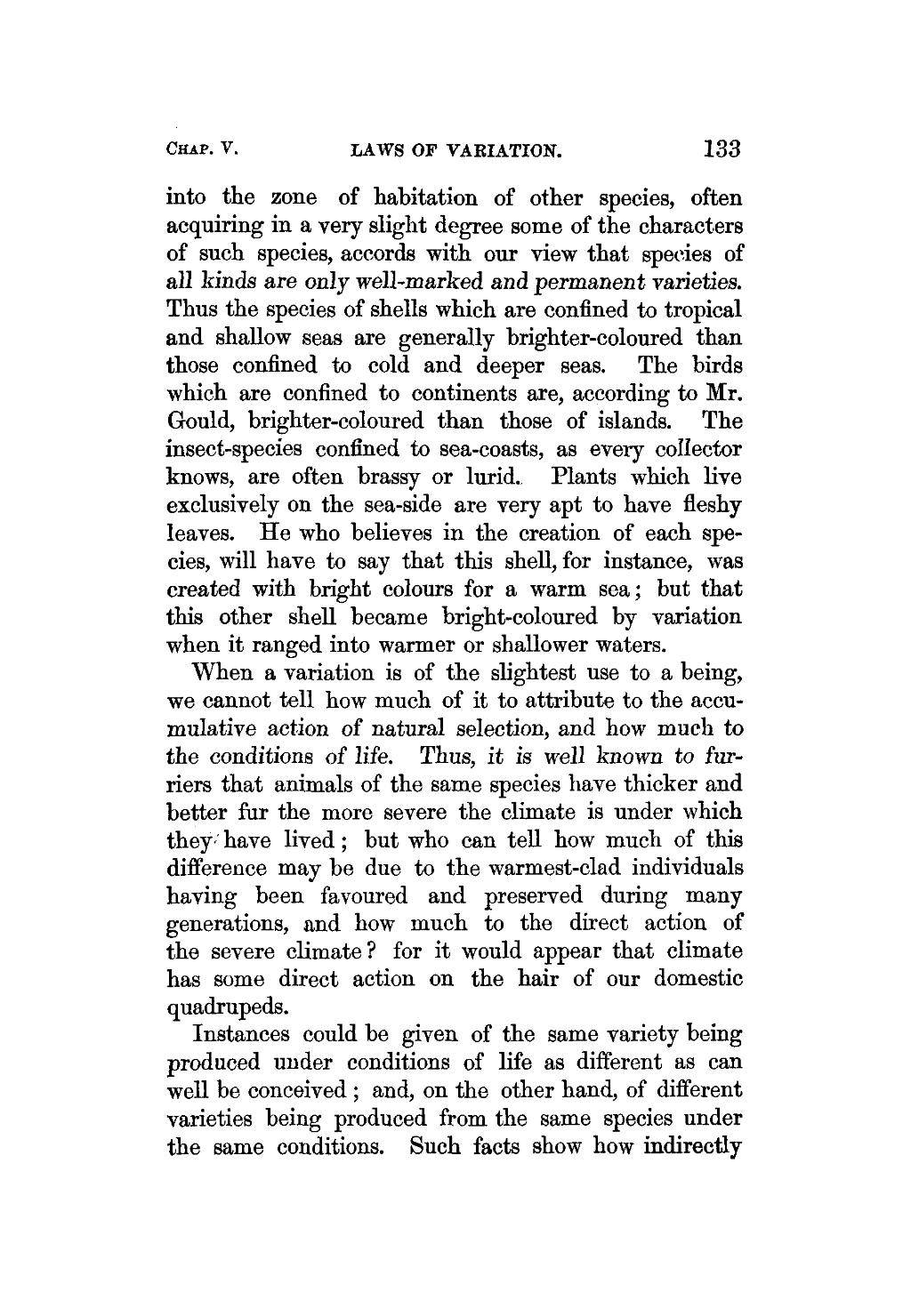into the zone of habitation of other species, often acquiring in a very slight degree some of the characters of such species, accords with our view that species of all kinds are only well-marked and permanent varieties. Thus the species of shells which are confined to tropical and shallow seas are generally brighter-coloured than those confined to cold and deeper seas. The birds which are confined to continents are, according to Mr. Gould, brighter-coloured than those of islands. The insect-species confined to sea-coasts, as every collector knows, are often brassy or lurid. Plants which live exclusively on the sea-side are very apt to have fleshy leaves. He who believes in the creation of each species, will have to say that this shell, for instance, was created with bright colours for a warm sea; but that this other shell became bright-coloured by variation when it ranged into warmer or shallower waters.
When a variation is of the slightest use to a being, we cannot tell how much of it to attribute to the accumulative action of natural selection, and how much to the conditions of life. Thus, it is well known to furriers that animals of the same species have thicker and better fur the more severe the climate is under which they have lived; but who can tell how much of this difference may be due to the warmest-clad individuals having been favoured and preserved during many generations, and how much to the direct action of the severe climate? for it would appear that climate has some direct action on the hair of our domestic quadrupeds.
Instances could be given of the same variety being produced under conditions of life as different as can well be conceived; and, on the other hand, of different varieties being produced from the same species under the same conditions. Such facts show how indirectly

